Expanding Our Perspective, Unlocking Our Potential
Georgia Family Connection 30-Year Impact Report

Letter
Every Georgian counts.
This means that every individual is an indispensable member of the community. It’s what unites us and drives our work. Our state’s landscape has changed since Georgia Family Connection began its work in 1991—and we’ve changed right along with it, while remaining true to our vision, mission, and values.
We’ve been learning, adapting, improving, and innovating for 30 years. We’ve built strong partnerships and have continually responded to our communities’ needs—and to the data—and we’ve bridged the silos so we can learn from each other.
This report demonstrates how we’re always learning from the past to inform our actions in the present as we plan for the future—constantly seeking the better way, the more efficient way, the most informed way to work toward measurably better outcomes for our children, families, and communities.
As we do this, we can invoke the seventh-generation principle, an ancient Iroquois philosophy that calls on us to consider the impact of our decisions, words, work, actions, and partnerships on the next seven generations—and to remember the seven generations who came before us.
This is also a lesson in diversity. We can only accomplish our collective mission when we embrace and nurture our diversity. And to truly make things better for everyone, we must place the Georgians at the peripheries at the center.


What we do is both an art and a science. We’re essentially dreaming by design—remaining creative and flexible while following a framework that’s rooted in truth and accountability. No matter what we’re facing—pandemics, civil unrest, a backslide in data collection—we must keep pushing forward.
Author James Watkins said, “A river cuts through a rock not because of its power but because of its persistence.” At Georgia Family Connection, we have both. With the power of our unique statewide network, imagine the barriers we can cut through—together. Why? Because it matters. Every single child, family, and community in Georgia matters.
Be well, be safe, and stay connected.

Executive Director
Georgia Family Connection Partnership

Board Chair
Georgia Family Connection Partnership
Introduction
Georgia has made significant strides in the past three decades to improve conditions for our most vulnerable children and families because leaders from both the public and private sectors recognize that Georgia can prosper only when our families and communities thrive.
Georgians embraced Governor Zell Miller’s challenge to invest in public-private partnerships and collaboration after the Annie E. Casey Foundation’s inaugural KIDS COUNT Data Book ranked Georgia 48th in the nation in child well-being in 1990. Georgia is the only state in the nation that has consistently made that kind of investment for 30 years. That investment is called Family Connection.
This report examines three areas: where we’re making things measurably better; where we’re stuck—and strategies to get us unstuck; and where breakthrough opportunities to change systems that benefit all Georgians are emerging.
Grounded in our mission, vision, and core values, guided by reliable data, and strengthened by local decision-making linked by our unique statewide network, we continue to learn from the past as we face a constantly changing landscape. And we do it with a boldness justified by our collective knowledge, purpose, and trust in one another.
Part 1: Breaking Through
Making Strides Through 30 Years of Meaningful Work
Georgia Family Connection has a unique vantage point—not only to see the big picture, but also to operate effectively at a local level. A disciplined model of collaboration and accountability is vital to helping our communities thrive.
Georgia KIDS COUNT, a GaFCP project, reports year-to-year data highlights, trends, and disparities on child well-being to inform planning, budget, and policy decisions regarding priorities, services, and resources. Collaboratives help craft local solutions to local challenges by digging deeper through community needs assessments, providing customized technical assistance and training, and offering other supports.
Family Connection advocates for system changes at the statewide level that eliminate the barriers and inefficiencies standing in the way of progress and positive outcomes for all Georgians. Success is defined differently in each county, but Georgia has seen a steady decline in children living in poverty along with an increase in adult educational attainment.
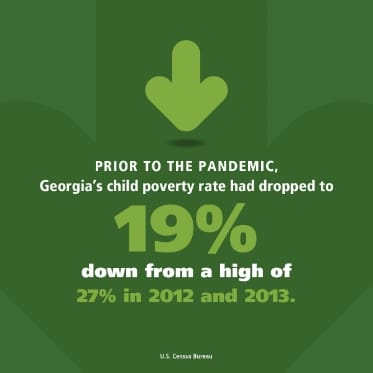
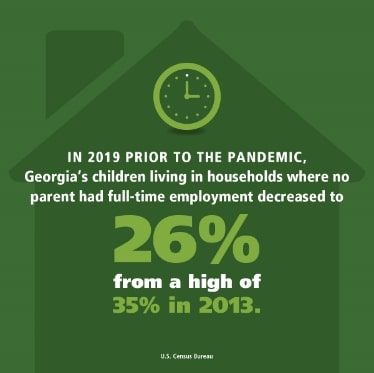
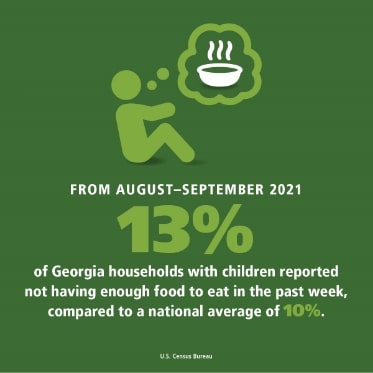

Prior to the COVID-19 outbreak, the number of children living in poverty was declining in Georgia. In 2020, 19.5% of children were living in poverty. Though still startlingly high and above the national rate of 17%, percentages for this indicator had not been that low in Georgia since 2004—prior to the onset of the Great Recession in 2007.
Georgia KIDS COUNT started tracking the current indicator for children living in poverty in 2001, and our rate reached a peak in 2012 when 27.3%—more than 1 in 4—of Georgia’s children were living in poverty. That percentage declined steadily every year from 2012 through 2020.
Another economic indicator that had a positive trend in Georgia prior to 2020 was our state’s unemployment rate. Capping out at 10.5% in 2010, Georgia’s unemployment rate was 3.4% in 2019 prior to the pandemic—the lowest it had been since the trendline for that KIDS COUNT indicator began in 2000. The unemployment rate in 2020 climbed to 5.1%.
However, even with a low unemployment rate, working Georgians sometimes struggle to make ends meet. And since March 2020, COVID-19 has threatened to derail the progress our state has made on economic outcomes. According to a U.S. Census Bureau Household Pulse Survey conducted from Feb. 17 – March 15, 2021—a year after the first case of COVID-19 was confirmed in our state—18% of Georgia’s households with children reported that they “sometimes or often” didn’t have enough food to eat, and 22% had “little or no confidence” in their ability to pay their rent or mortgage on time.
It remains to be seen how the pandemic and the responses of our public and private institutions will affect economic outcomes for Georgia’s children long term. Illness, inconsistent access to child care, and other issues exacerbated by the pandemic that disrupt our state’s workforce and the prosperity of families continue to evolve and present challenges. Beyond that, policy decisions made during and after the pandemic have the potential to greatly affect the economic well-being of all children and families.
To continue the positive economic trends for our state, we must persist. Keeping a focus on the well-being of our most vulnerable Georgians and the obstacles they face will give us the best opportunity to continue making gains despite the volatile nature of COVID-19—and any circumstances our state and nation encounter in the future.
Circles of Troup County Executive Director Sherri Brown—Eradicating Poverty
Sherri Brown, Director of Circles Troup, discusses some of the root causes of poverty in Troup County and explains what communities across Georgia can do to address systemic barriers. Brown also explains how to incorporate a race, equity, and inclusion lens in every facet of our work to achieve the results we seek when it comes to eradicating poverty in Georgia.
Poverty Task Force Helps Families Prosper in Hart County
Hart County is fighting the battle against child poverty on several fronts—and the strategy is working. Hart Partners, a Georgia Family Connection Collaborative, partnered with the University of Georgia’s Archway Program and formed a Poverty Task Force examining poverty from five vantage points: financial literacy, health and wellness, education, food insecurity, and housing and utilities. “You have to look at it as a circle and these are the pieces to the pie,” said Patricia Werner, the Collaborative’s executive director. “When you put programming in place in all these areas, you have a much better chance of helping these families.”
Read More
Higher levels of education and income tend to correlate with better outcomes for children, families, and communities. So it’s promising for the future of our state that 87.9% of adults in Georgia held at least a high school diploma and 32.2% held a bachelor’s degree or higher in 2020—the highest percentage for both indicators in a decade. Both measures of adult educational attainment also have shown a steady increase since 2009.
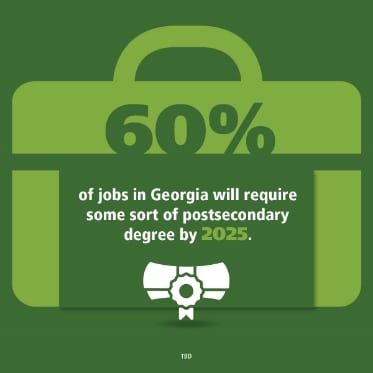

Prior to the pandemic, Georgians’ increased levels of education were already paying off in the form of secure jobs. In addition to record low unemployment rates in 2019 at 3.4%, the number of Georgia’s children whose parents lacked secure employment reached 7.5% in 2020, its lowest point since 2009. Georgia’s families with children were faring far better in this well-being indicator than the national average of 26%.
This bodes well for Georgia’s future, especially since the number of available jobs requiring postsecondary training or education in our state continues to increase. According to the Georgia Chamber of Commerce, 60% of Georgia’s jobs of the future will require postsecondary certification or degrees. But COVID-19 disrupted pre-pandemic trends, and it will likely be several years before we know the full extent of how Georgia’s employment opportunities and workforce has been—and will continue to be—affected.
We’re aware of some shifts. Older Georgians expedited retirement plans, younger generations seized additional or new training opportunities to pursue different and often higher-skilled jobs, and wages have risen for workers in some service jobs. With these changes come both challenges and opportunities. It’s up to all of us to advocate for changes that benefit Georgia’s children and families, while stepping up to address obstacles placed in our collective path to post-pandemic prosperity.
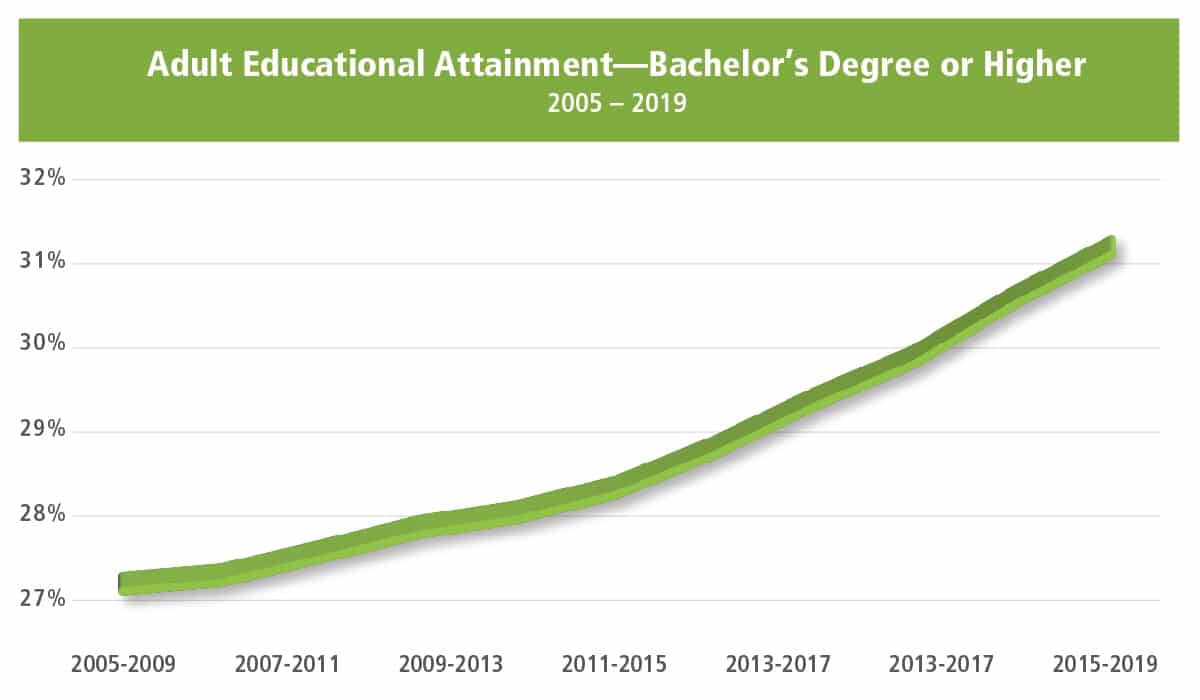
Brian Wallace of the Georgia Municipal Association—Come Back Home
Georgia Municipal Association (GMA) Director of Strategic Initiatives Brian Wallace explains how adult education attainment affects the overall well-being of a community and how GMA is working to improve civic health in Georgia. Wallace also offers tips for engaging youth early on to encourage them to stay in—and contribute to—their communities.
Planting Seeds of Rural Prosperity by Raising Future Leaders in Lee County
Patsy Shirley, executive director of Lee County Family Connection, and Lisa Davis, president of the Lee County Chamber of Commerce, shared a vision to create the Junior Leadership Lee program. “We want students to understand their community—how it’s run, who runs it, and how they can potentially run it as adults,” said Shirley. After securing funding and partnerships, the Collaborative convened a group of eighth graders to find out what they hope to gain from the Junior Leadership Lee Academy.
Story Link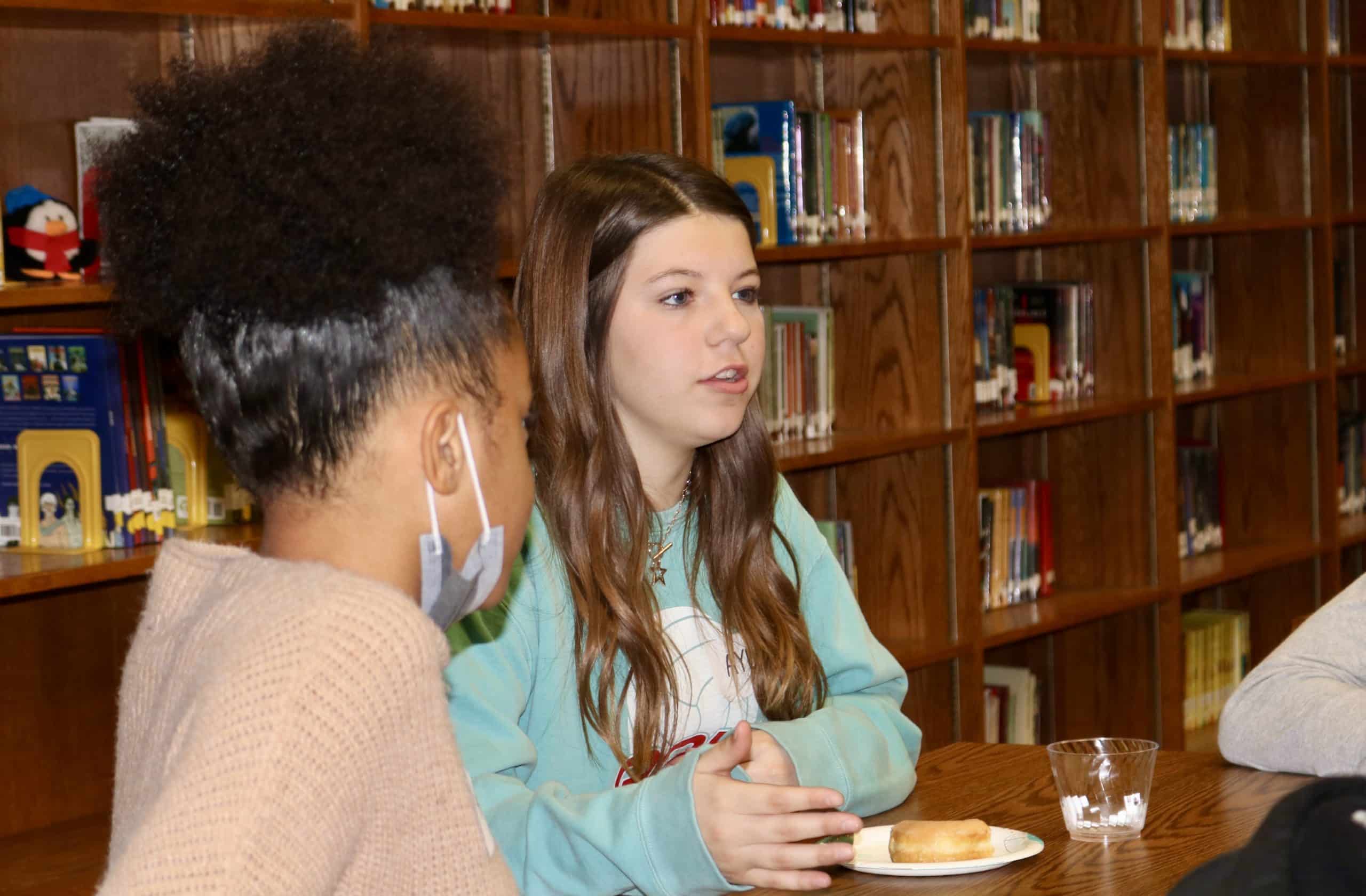
Part 2: Overcoming Obstacles
Getting Unstuck – Change is Possible
“Stay the course” is a popular idiom—but that directive doesn’t translate across our state where some communities have already set sail while others haven’t even cast off, solely based on geography. Thirty years of disaggregated data shows that distributing resources to achieve an equitable result is critical.
Interventions to foster maternal and infant health are expensive, and there’s limited access to prenatal care across rural Georgia along with disproportionate quality of care for women of color. Investing in academic achievement leads to economic prosperity, but a lack of data from birth through kindergarten puts school systems at a disadvantage. Third-grade reading proficiency is the leading predictor of high-school graduation, and a holistic approach is critical to contend with issues that are systemic and entrenched. Investing in young kids and young families will benefit all Georgians. Reliable and timely data helps make the case for grant funding—so it’s imperative that it’s available to us.
LBW babies are at higher risk for developmental delays, short- and long-term disabilities, chronic health issues like asthma and heart disease, and other challenges. LBW is also the chief predictor of infant mortality in the first year of life. Nearly 70% of babies who die before their first birthday in Georgia and the United States are LBW.
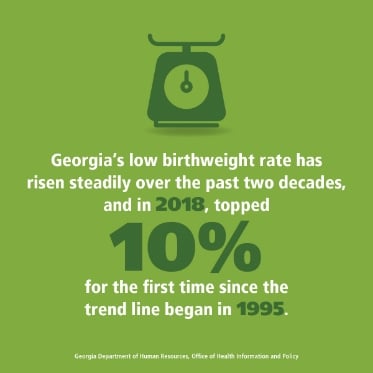
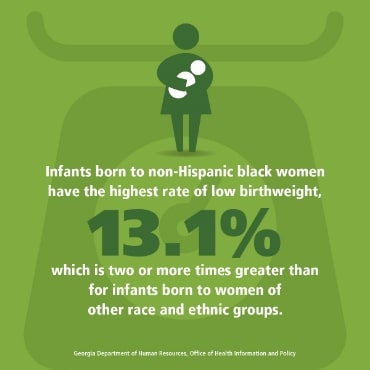

The pandemic laid bare shortcomings of our health care system and the lack of access for some residents to healthy foods, medical insurance, mental health services, medical providers, and other resources and services that enable all Georgians to stay healthy. LBW is one early and telling indicator that women and children aren’t getting everything they need to thrive, linking to a larger picture of community health. Because of Georgia’s historically high LBW rates, it’s vital that we continue tracking this measure of maternal and infant health—and community health—as we seize opportunities that have come with increased momentum from the pandemic to improve Georgia’s health care system, health-focused services, and care for mothers.
James P. O’Neal, MD, UGA Institute for Disaster Management—Improving Birth Outcomes in Georgia
James Patrick O’Neal, M.D., a clinical professor at the University of Georgia’s Institute for Disaster Management and past commissioner for the Georgia Department of Public Health, unpacks why we’re seeing racial disparities in LBW rates—and how we can close that gap. O’Neal also shares what we can do to improve birth outcomes in Georgia and what the pandemic uncovered about issues related to maternal and infant health.
Lamar County Leaders Partner to Prevent Low Birthweight
Data doesn’t always tell the whole story. In Lamar County, for example, there was an increase in LBW babies from 13.8% in 2016 and 2017 to 18%—a decade high—in 2018. Then it dropped to 9.7% in 2019—the lowest it had been since 2013. But there’s more to these numbers than meets the eye. Delving into what causes the number of LBW babies to fluctuate drastically from one year to the next is a challenge, particularly when factors often beyond anyone’s control can have an impact. Those involved in Lamar County Family Connection’s Promoting Women’s Health and Healthy Births Cohort are strategizing creative ways to reach out to the community given changes the pandemic created.
Read More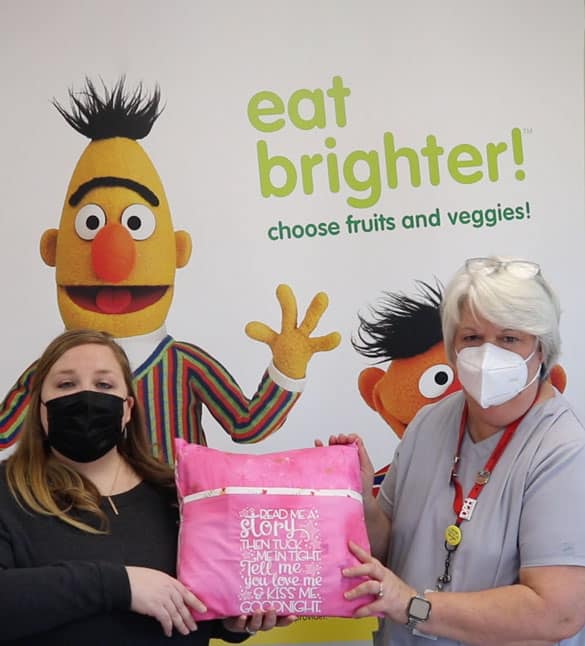
Low achievement in reading affects our economy, our safety, and our health. Third-grade reading achievement is a consequential milestone that gives us a peek into children’s probable well-being, success, and participation in civic life—in the short and long term.
Leading experts and decision-makers from public health, child welfare, education, state and local government, business, law, and other sectors have embraced and collectively undertaken efforts to improve Georgia’s third- and fourth-grade reading scores.
What is startling given this collective effort is that, prior to the pandemic, Georgia’s recent gains appeared to be slowing down. In 2022, 68% of fourth graders scored below proficient in reading—3% worse than in 2017. Though an improvement from the early 2000s when 74% of Georgia’s fourth graders scored below proficient, the significant implications for this indicator require us to demand better for our children.



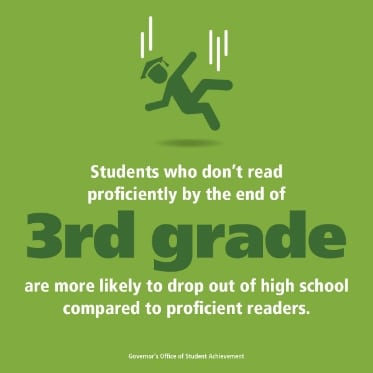
Disruptions caused by a lingering pandemic are complicating the issue, as well as limiting data that help us understand the problem and guide us toward solutions. These barriers to learning have not only affected K-12 students, but also our youngest children setting out on the path to reading proficiency.
We’ve known for years the significance of third-grade reading proficiency as a measure and predictor of future success. Fortunately, we’ve also studied and know how to improve literacy outcomes. Our next chapter in this work must be to intensify our focus, investment, commitment, and innovation, acknowledging that maintaining a long-term systems-change approach will be a challenge, but well worth the effort.
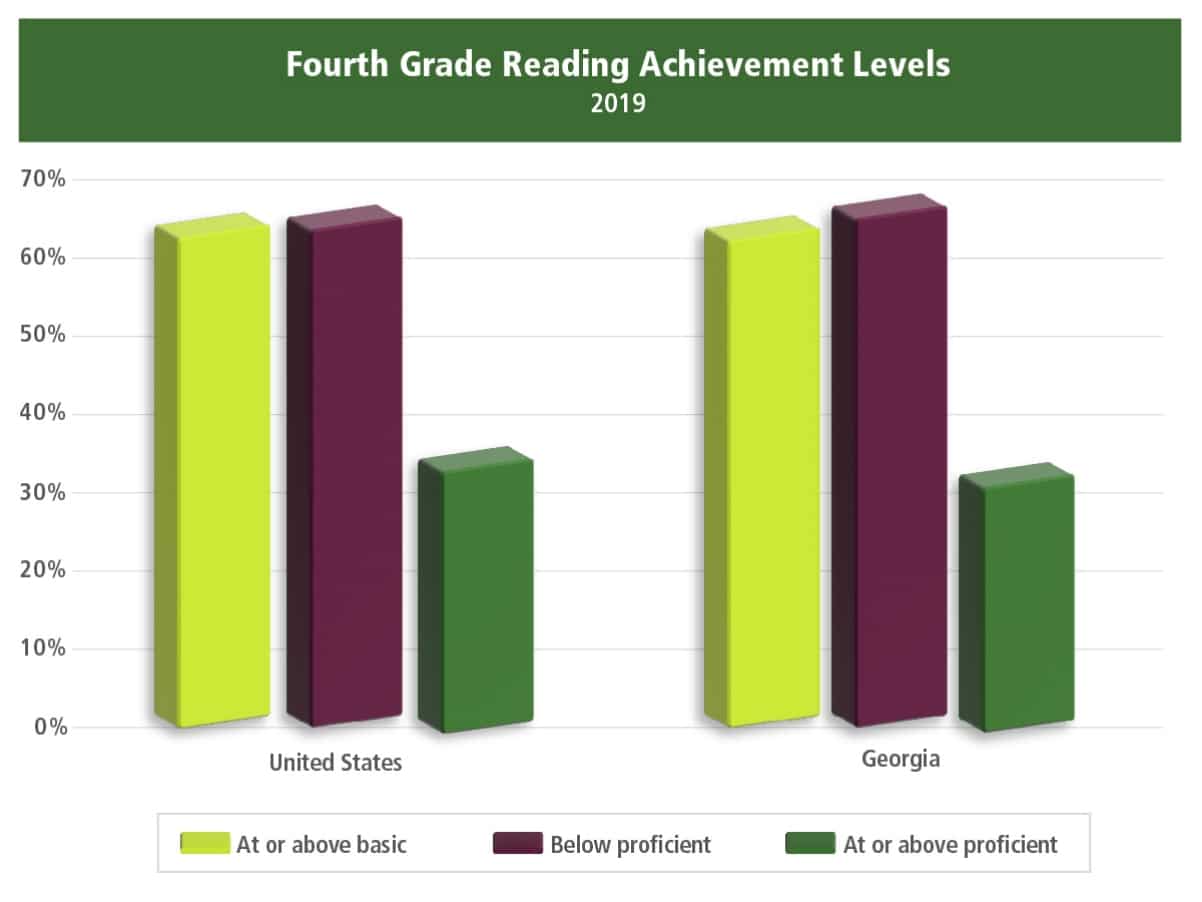
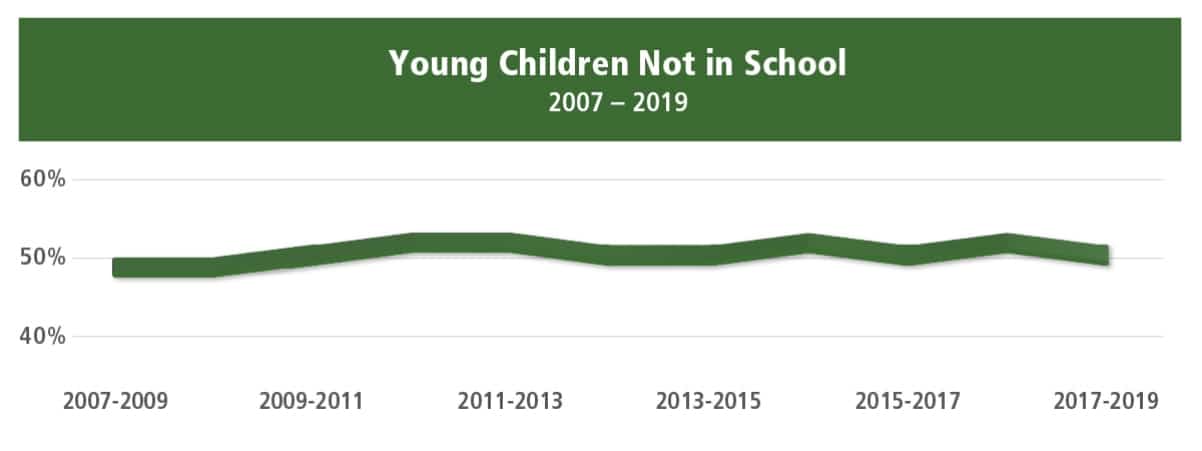
Judge Wenona Belton—Childhood Literacy Interrupts Flow in School-to-Prison Pipeline
Judge Wenona Clark Belton, presiding judge for the Juvenile Court of Fulton County, discusses how childhood literacy is disrupting the flow in the school-to-prison pipeline and what—beyond incarceration—are some short- and long-term consequences of this pipeline. She also shares what Georgia’s communities can do to ensure that we invest more in educating our children than we spend on incarcerating adults.
Literacy Efforts Lead Meriwether County Family Connection to New Partners and Grant Funding
Sometimes one conversation can create a seismic shift in strategy. That’s what happened when Rhonda Fuller attended a peer-to-peer presentation about Get Georgia Reading—Campaign for Grade-Level Reading after stepping into the role of executive director for Meriwether County Family Connection. The Collaborative had joined GaFCP’s Promoting Women’s Health and Healthy Births Cohort, aiming to work with partners to build strategies to improve women’s health and birth outcomes—and Fuller immediately recognized the overlap between the population in need of women’s health, healthy births, and literacy supports.
Read More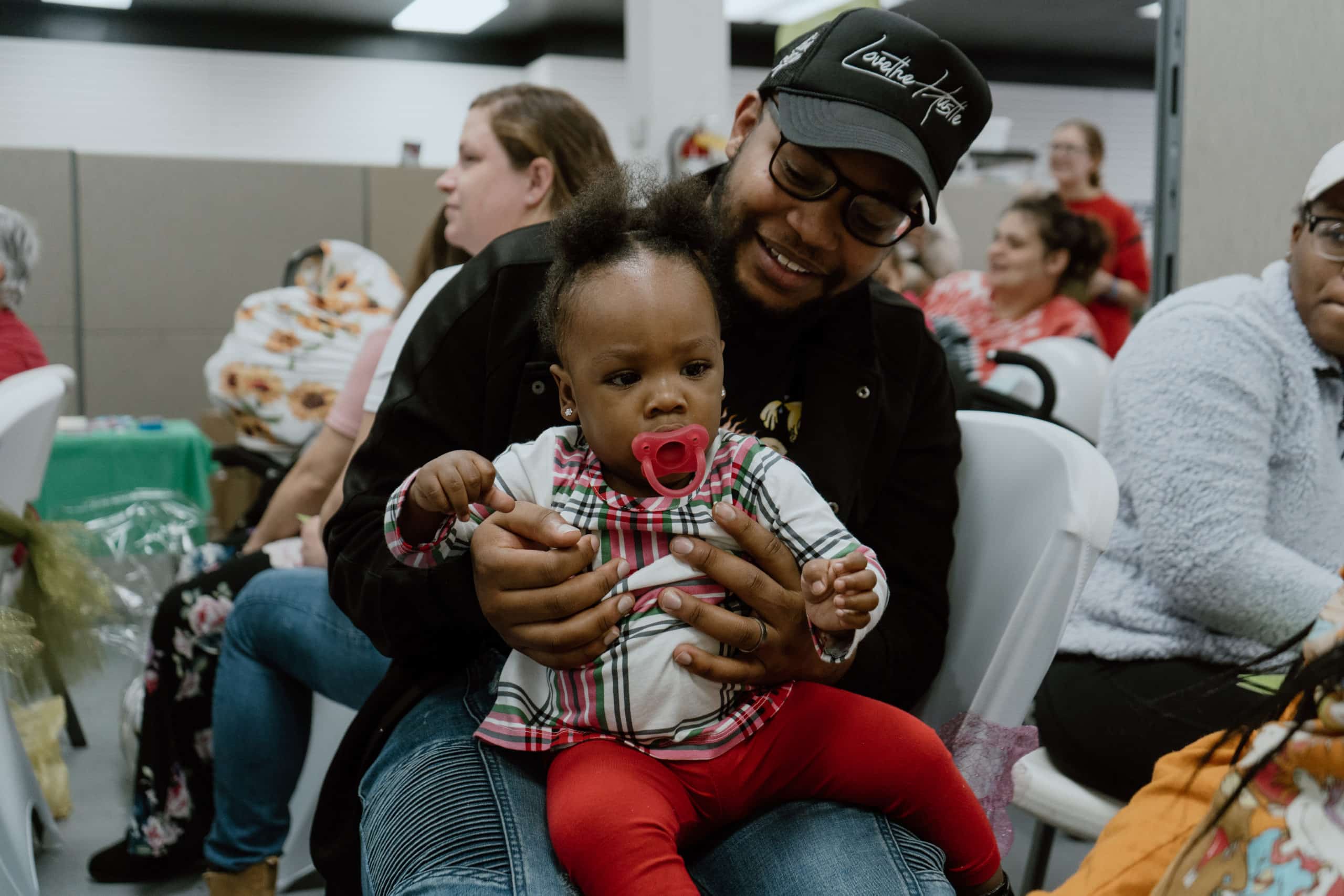
We’ve made great strides in Georgia’s high-school graduation rate in recent years. In 2021, 83.7% of students graduated on time, compared with 67.5% in 2011. Still, our youth too often face significant barriers to success—including challenges related to poverty and physical or mental health.
According to the FY21 Georgia Student Health Survey, 36,840 students in grades 6 – 12 reported being bullied at least once within the past 30 days. In 2021, 413 Georgians ages 15 – 19 died by homicide, suicide, or accident. That number in 2019 was 278. And we have much work to do to get the 7.6% of teens who aren’t in school and aren’t working reconnected and reengaged in our communities.
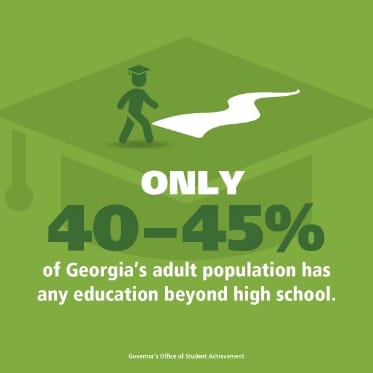
Because the reasons students leave school vary, the methods to support them also need to be comprehensive. Evidence-based strategies support opportunities for youth and keep them engaged in their education. We must bring together cross-sector partners at the local level to develop tailored strategies, while continuously evaluating goals related to policies, procedures, and systems that affect learners. Empowering community is another key component of school success.
Helping teens stay engaged increases their chances for success. Research shows that civic engagement is related to improved public health outcomes, including mental health, economic resilience, low unemployment, and lower violent crime rates. These positive outcomes, according to the 2019 Georgia Civic Health Index, have been found in both adults and adolescents. Graduating from high school on time also generally leads to better health, higher income, and a lower likelihood of involvement with the criminal justice system.
While focusing on providing children with a healthy start and access to high-quality learning opportunities from a young age is critical, implementing key interventions and strategies for older children who didn’t have those early advantages can help them reach their full potential and become productive, engaged adults and community members.
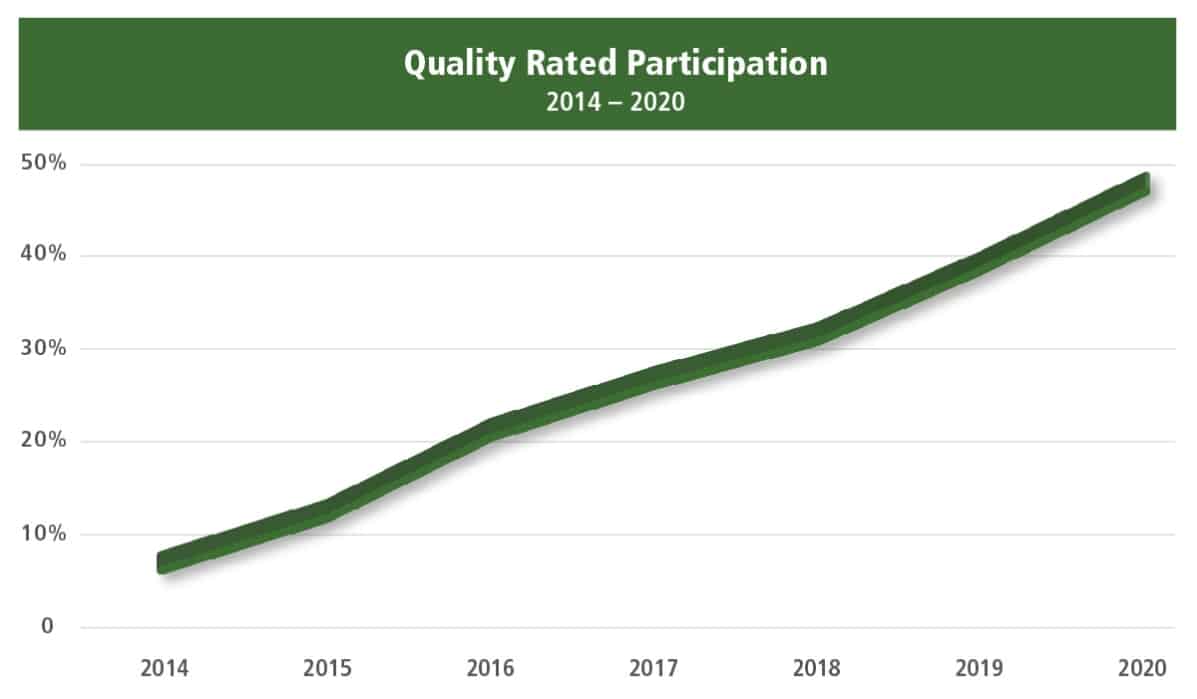
Georgia Chamber President and CEO Chris Clark—A Beacon of Opportunity
Georgia Chamber of Commerce President and CEO Chris Clark explains how our graduation rate impacts the Chamber’s work to keep, grow, and create jobs to make Georgia a better state for business. He also discusses the skills gap we’re facing for our emerging workforce and new financial burdens to support an older, retired population—along with emerging opportunities to craft a three-generation approach that empowers older Georgians to contribute to our state, and he shares the steps we can take to help Georgia be a beacon of opportunity for equality and inclusion.
GPEE President Dana Rickman—Reaching the Missing 16%
Georgia Partnership for Excellence in Education President Dana Rickman explains why the economic viability of Georgia’s future depends on reaching the 16% of students not graduating. She explores interventions we can design to target those students and families—locally and at the state level—and why a birth to 21, two-generation approach helps improve academic achievement.
Georgia’s Future Economic Vitality Banking on Reaching the Missing 16%
By 2025, 60% of jobs in Georgia will require some sort of postsecondary degree or certification. In Richmond County, where a large portion of the population remains after high school, strong partnerships are making a powerful impact on Richmond County’s educational and economic future. “A huge part of our strategy is sharing ideas, and we’re seeing more innovative ideas and programs as people come together,” said Candice Hillman, executive director of the Augusta Partnership for Children, Inc. While some barriers to attendance and academic achievement, such as lack of transportation and health issues are easy to spot, others aren’t always immediately evident.
Read More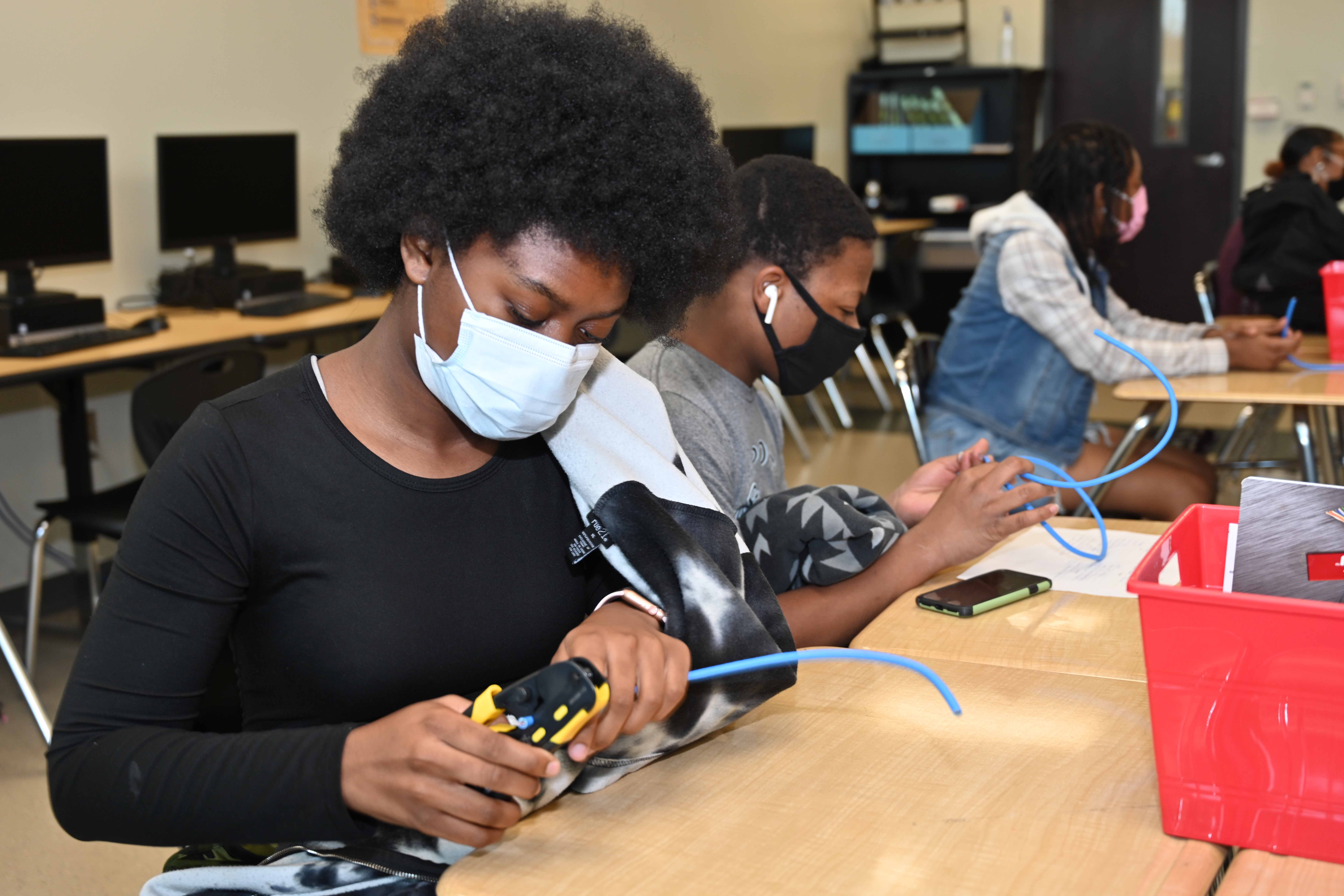
Part 3: Pursuing Possibilities
Seizing All Breakthrough Opportunities
Georgia has had the highest per capita usage of KIDS COUNT data in the nation for the past two decades—but what matters most is what we do with the information. Coming together in 159 counties to craft data-driven efforts that benefit our most vulnerable children and families requires building bridges across silos—considering all stakeholders’ needs and goals to create optimal conditions for real collaboration and change.
The pandemic disproportionately hurt families of color, and we must analyze data disaggregated by race and ethnicity to inform decision-making. The data also show that mental health will be our next pandemic unless we make addressing it a statewide priority. These times require us all—with greater purpose than ever—to listen to, learn from, and responsibly share with one another, continuing to work shoulder to shoulder, to rise to the moment, and stay disciplined in our approach to collaboration. Amid turmoil, seizing breakthrough opportunities will have a profound long-term positive effect on our communities.
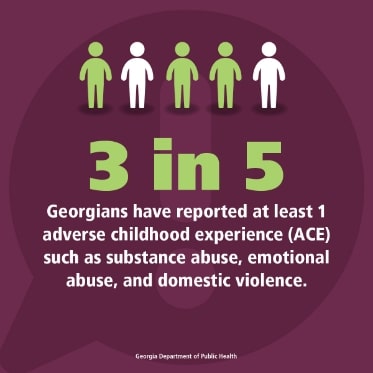

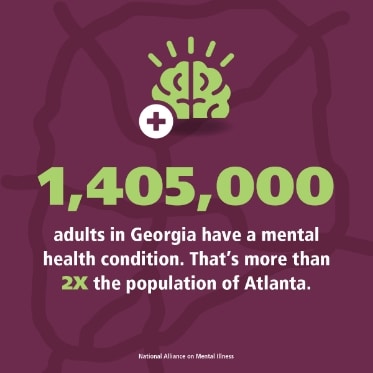
Mental health—specifically access to high-quality mental health services—has long been a concern across the country. Georgia is ranked in the top five states with the highest mental health provider shortages, according to a 2020 report.
The pandemic exacerbated mental health challenges and increased the need for services in Georgia and across the country. Isolation and uncertainty led to greater anxiety, substance abuse, and depression among Georgians. Close to half (44.3%) of our state’s adults reported symptoms of anxiety or depression in February 2021.
Georgia’s children aren’t immune to mental health disorders, and they’re lacking care as well. According to the National Alliance on Mental Illness, 104,000 of Georgia’s children ages 12 – 17 struggle with depression. As of February 2021—at the height of the pandemic—68.4% of those children hadn’t received care in the previous year. Across the nation, 70% of youth involved with the juvenile justice system have a mental health condition, compared with 20% in the general child population ages 3 – 17 who have a diagnosable mental health disorder, according to the Centers for Disease Control and Prevention (CDC). This demonstrates the reality of what happens when children aren’t provided access to treatment and supports.
Research tells us that being exposed to certain stressors and trauma in childhood, Adverse Childhood Experiences (ACEs), can lead to mental health challenges down the road. While three in five Georgians have reported at least one ACE, support for children and adults who have experienced trauma and resulting mental health challenges can be difficult to access. Nearly 30% of Georgia’s adults were unable to get counseling or therapy when they needed it, according to the National Alliance on Mental Illness. And according to Voices for Georgia’s Children citing the CDC:
- 78 counties don’t have a licensed psychologist,
- 53 don’t have a licensed social worker, and
- 45 don’t have either type of professional located in the community.
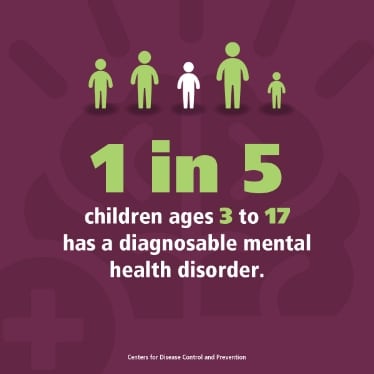
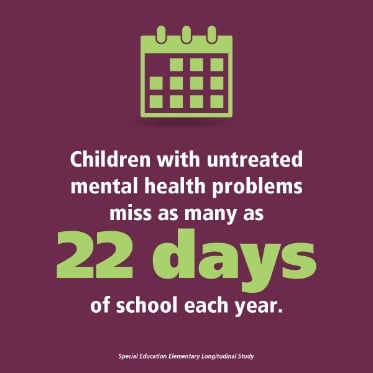
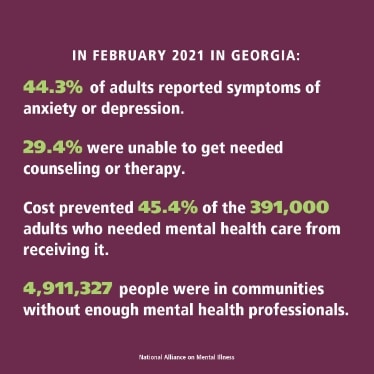
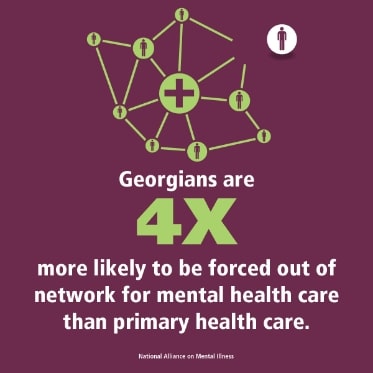
Mental health is a tough issue to tackle. Many are hesitant to seek help or discuss the issue because of a perceived or actual stigma attached, and there is a dearth of data that could help us understand the nuances of the issue and develop solutions at the individual and system levels. It’s also a wide-ranging issue that, if we’re to improve upon, will require employing both prevention and treatment strategies targeted to all populations.
Organizations and leaders from across the state are seizing opportunities created by a new public and political will to address our collective mental health challenges by advocating for broad policy solutions like those included in the Georgia Essentials for Childhood framework—such as:
- investing in early care, education, and economic supports;
- promoting coordinated, trauma-informed practices;
- developing better methods for measuring outcomes and tracking data over time; and
- building awareness and a common language around adversity and resilience as prevention strategies.
Advocates are also elevating recovery and treatment strategies by increasing the number of practitioners throughout the state and improving upon screens for mental illnesses and disorders within the criminal justice system—and linking individuals in need to services.
Mental health is health. And in order to have healthy economies and healthy communities, we must have healthy people. Tackling our mental health challenges head-on—using both prevention and treatment strategies—will be critical for our collective, future success.
Rome Floyd County Commission on Children and Youth Executive Director LaDonna Collins—Resilience
Rome Floyd County Commission on Children and Youth Executive Director LaDonna Collins describes how her Collaborative is building a “Region of Resilience” through a grant-funded project, what it actually means to build capacity in a community, and how to intentionally build community engagement with partners and with families. Collins also shares how being part of this unique statewide network helps Collaboratives work toward achieving systems change.
Double-Teaming Mental Health Issues in Bryan and Effingham Counties
Effingham Family Connection Executive Director Elaine Spencer and Bryan County Family Connection Executive Director Wendy Futch discuss how they’re combining strategies to conduct a community needs assessment that’s guiding their efforts to improve state of mental health in their counties. They explain how they’re also tapping into the strength of the statewide network—and explore changes we need across the state to improve mental health for all Georgians.
Turning the Tide on Suicide and Substance Abuse in Coffee County
Coffee County is all too familiar with the heartache a community endures when mental health challenges end in tragedy. Two high-school students died by suicide from overdose in February 2019, followed by a cluster of suicide attempts within two weeks. It left a grieving community questioning how to prevent further tragedies. While Coffee County Family Connection’s “Know Your Worth” initiative aims to decrease youth risky behavior, a community needs assessment conducted in fall 2019 and winter 2020 uncovered another major concern.
Read More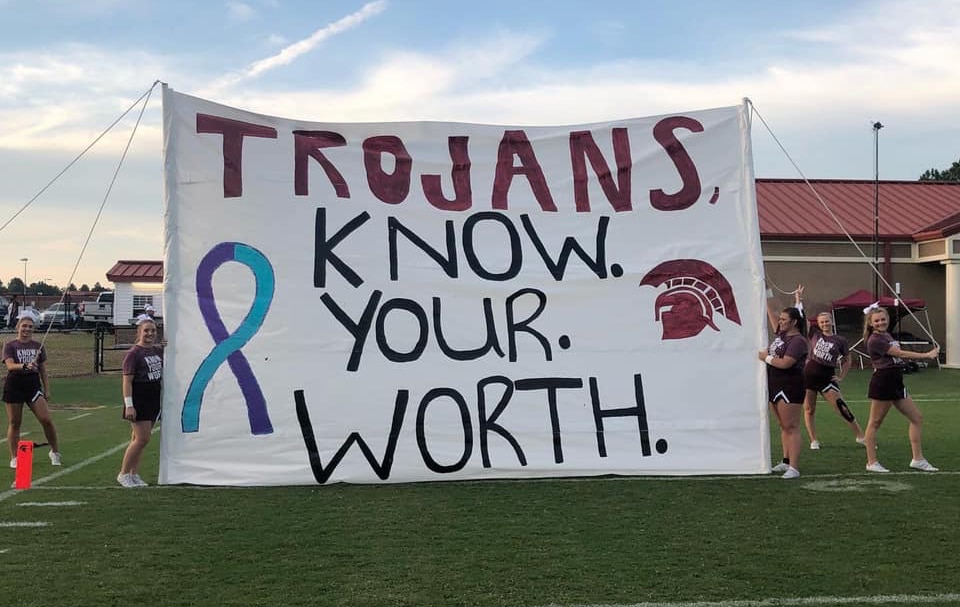

If we expect to help all Georgians thrive, we must acknowledge where there are disparities across demographics, and we must do more than close gaps. Our work must strive to achieve equity, a state in which all have the same opportunity to reach their potential. By focusing on equity, we can:
- ensure fair treatment, opportunity, and access to resources;
- create a culture of respect and understanding;
- build a culture of belonging; and
- enhance engagement.
When we disaggregate Georgia’s well-being indicators by race and ethnicity, we can clearly see persistent disparities and inequities between people of color and white people. For example, when we look at Georgia’s LBW data disaggregated by race, we learn that Georgia’s non-Hispanic black mothers and babies are in even greater peril than the general population, with 14.7% of black babies weighing below the 5.5-pound threshold at birth in 2019, compared with the overall Georgia rate of 10%, and 7.2% for white babies.
Similarly, Georgia’s poverty rate is approximately triple for black (31.3%), Hispanic or Latino (31.9%), and American Indian (33.5%) children when compared to white (11.5%) and Asian (10.2%) children. Homeownership—a key component of wealth-building—also varies significantly by race and ethnicity in Georgia. As of 2019, 74% of white households were owner-occupied, compared with 65% of Asian, 48% of Hispanic or Latino, and 47% of black or African American households.
A complex system of racial bias and inequities is deeply rooted in our country’s—and state’s—history, culture, and institutions. These disparities present us with tremendous opportunity to clear a path for all Georgians to reach their full potential. To do that we must clearly understand, challenge, and transform systems that routinely confer advantage and disadvantage based on skin color and other characteristics.
The Annie E. Casey Foundation has outlined seven steps to ensure that we’re creating equitable opportunities for the populations we serve:
- Establish an understanding of race, equity, and inclusion principles
- Engage affected populations and stakeholders
- Gather and analyze disaggregated data
- Conduct systems analysis of root causes of inequities
- Identify strategies and target resources to address root causes of inequities
- Conduct race equity impact assessment for all policies and decision-making
- Continuously evaluate effectiveness and adapt strategies
By targeting and implementing strategies that will improve conditions for our most vulnerable residents—and by transforming systems that are preventing progress for all of us—we can learn how to improve outcomes for everyone, and bring into focus our vision of an enduring, healthy, and prosperous Georgia.
Past GaFCP Board Chair and Former City of Savannah Mayor Otis Johnson—Embrace Diversity, Minimize Differences
Past GaFCP Board chair and former city of Savannah mayor Otis Johnson reflects on growing up in the Jim Crow era and about challenging—all his life—the precepts that all people are created equal and have inalienable rights. He also talks about the power of diversity, moving past discussion to action by first seeking common ground, and using the data and following best practices to find and address unjust disparities.
Drawing Courage from Our Kids—Confronting Systemic Racism in Rockdale County
When Courageous Conversations Rockdale was looking for trailblazers to form their youth pilot, they sent out a call to all public and private schools in the county. The diverse community leaders that assembled to promote and embrace cultural diversity weren’t searching for student leaders at the top of their class with the highest test scores. They wanted kids who struggled in school, dropped out of school, were considering dropping out, or were involved in gang activity.
Read More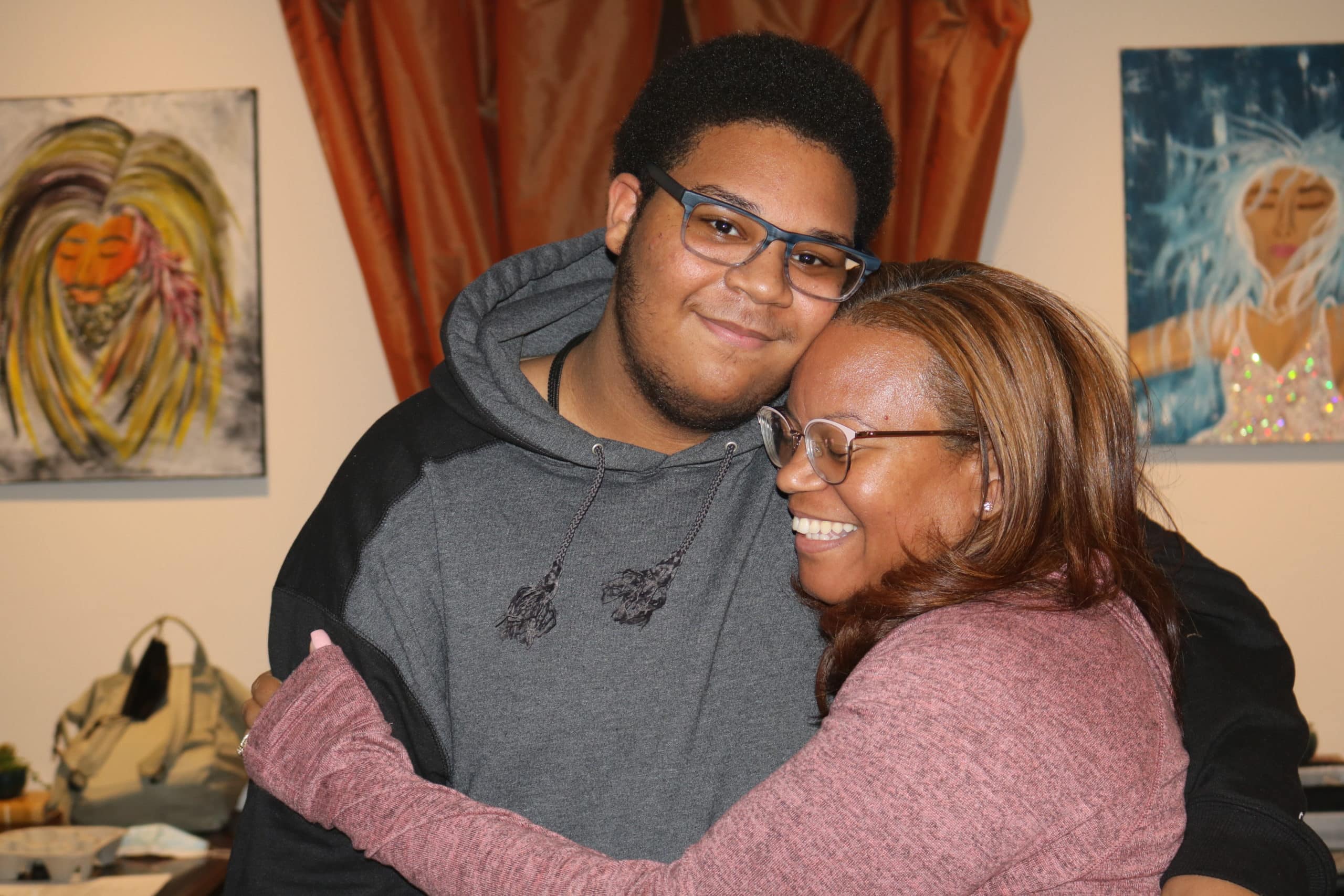
A Look Ahead
Beyond the Status Quo
It’s clear that there are areas where Georgia is making strides, attempting to get unstuck, and can seize breakthrough opportunities. The data shows us that. Now we must focus on the steps we can take to ensure that all children are healthy, primed for school, and succeed when they get there; all families are stable, self-sufficient, and productive; and every community in our state is vibrant, robust, and thriving.
Maximize new connections created during the pandemic.
New partnerships have been established since 2020 when communities across the state banded together to fulfill extensive needs. The Georgia Family Connection statewide network bridges siloes—convening, collaborating, being inclusive, and bringing the right people with the right resources to the table for a common goal.
Address the gaps we’re seeing.
The pandemic has brought awareness to issues such as housing and food insecurity, physical and mental health care access, and inequities in our education system that have become more prevalent. Decisionmakers across sectors must provide and invest in strategies that will allow people to get the support and care they need—both immediately and for the long-term.
Find—and fund—the “black hole” data.
When we hear “You’re doing great work” the first question we ask is “How do we know it’s great work?” We must address data that does not exist—particularly data from birth through kindergarten and data disaggregated by race and ethnicity so that—together—we can determine the specific supports, programs, and investments necessary to realize lasting, positive change.
DECAL Deputy Commissioner of Quality Innovations and Partnerships Bentley Ponder—Strengthening Our Youngest Learners
Bentley Ponder, Deputy Commissioner of Quality Innovations and Partnerships for the Georgia Department of Early Care and Learning, discusses why data matters—and how we can work together to collect data and develop strategies that benefit our youngest learners. Ponder also shares how we can better support early learners from birth through age 3 and what’s most important in preparing Georgia’s children for kindergarten.
GaFCP will continue to support the Georgia Family Connection statewide network.
Collaboratives across the state are collecting data; establishing clear, attainable goals; and evaluating outcomes. GaFCP provides technical assistance and training and expertise in planning and governance, and administers the state-appropriated funds for the Collaboratives in all 159 counties—lending knowledge and partnerships to craft local solutions to local challenges. This mechanism for collaboration, unique to Georgia, is critical to ensuring all sectors are working together for the best possible outcomes for our state’s children, families, and communities.
GaFCP Executive Director Gaye Smith—This Is What We Must Do
GaFCP Executive Director Gaye Smith calls on the unique Georgia Family Connection statewide network to not simply break through barriers, but to accelerate progress for our most vulnerable families as we launch into our next 30 years so they, our communities, our state—all of us—will thrive.
